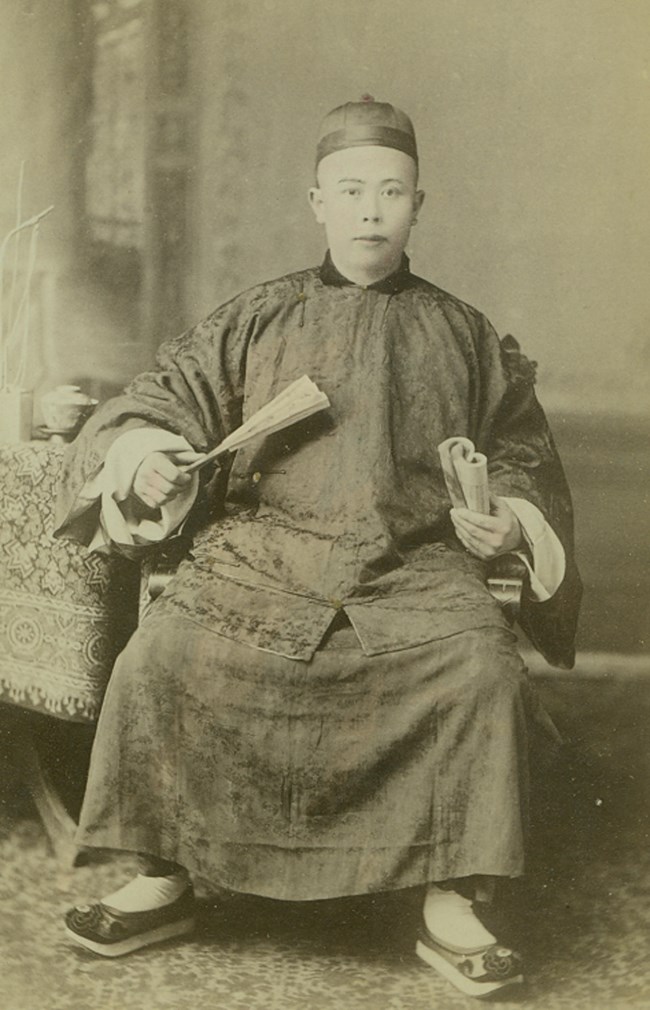Part of a series of articles titled Vancouver Barracks in the 1880s.
Article
Vancouver Barracks in the 1880s: Chinese Workers

Clark County Historical Museum, 6120
At Vancouver Barracks, immigrants from either China or Ireland often worked as civilian servants and cooks in the households of the post's officers and their families. Chinese immigrants had worked here as cooks as early as 1850, when a cook named Ah-long worked at the Vancouver Barracks Quartermaster's Ranch. In 1879, General Oliver Otis Howard, a famed Civil War Veteran and commander of the Army's Department of the Columbia, moved into the commander's residence on Officers' Row. Alongside the Howard family lived Chinese cook Mick Lai and Irish servant Kitty Traynor."Starting in the 1850s, harsh economic and political conditions in China prompted laborers to leave, usually with plans to eventually return to their native country. At the same time, the United States - the land the Chinese called "gum saan" or "gold mountain" sought laborers to work on the transcontinental railroads. The Northern Pacific Railroad employed more than 21,000 Chinese laborers for its line through Washington and Idaho Territories, and nearby Montana. Although many Chinese men worked on railroads, they also engaged in occupations like gold mining, ditch digging, logging, and as servants and cooks in the households of military officers and other well-to-do-civilians. Others still became entrepreneurs, and Chinese stores and laundries became increasingly common."
- Donna Sinclair, Historic Resource Study of Vancouver Barracks
In 1880, thirteen Chinese men worked in the homes along Officers' Row. They were all single, and likely came to the US alone, or with male family members. The 1875 Page Act had banned Chinese women from immigrating to the US. In 1882, the Chinese Exclusion Act banned Chinese workers from entering the United States and required the deportation of any Chinese who arrived after 1880. This made it nearly impossible for those who had come to the US to leave the country if they wished to ever reenter. For the Chinese workers at Vancouver Barracks, they would have been unable to visit their homes and families in China without giving up their chance to work in the US.
In late 1885 and early 1886, violence broke out in Tacoma and Seattle as mobs pursued Chinese immigrants and attempted to force them to leave the country. Troops from Vancouver Barracks were deployed to Seattle to help restore order. Learn more about Vancouver Barracks' response to the anti-Chinese riots of the 1880s here.
While some chose to leave after the riots, many Chinese immigrants who had come to the United States to find new opportunities stayed, triumphing over the racism and violence they encountered to find careers, start families, and create communities here.

NPS Photo
Last updated: June 24, 2021
